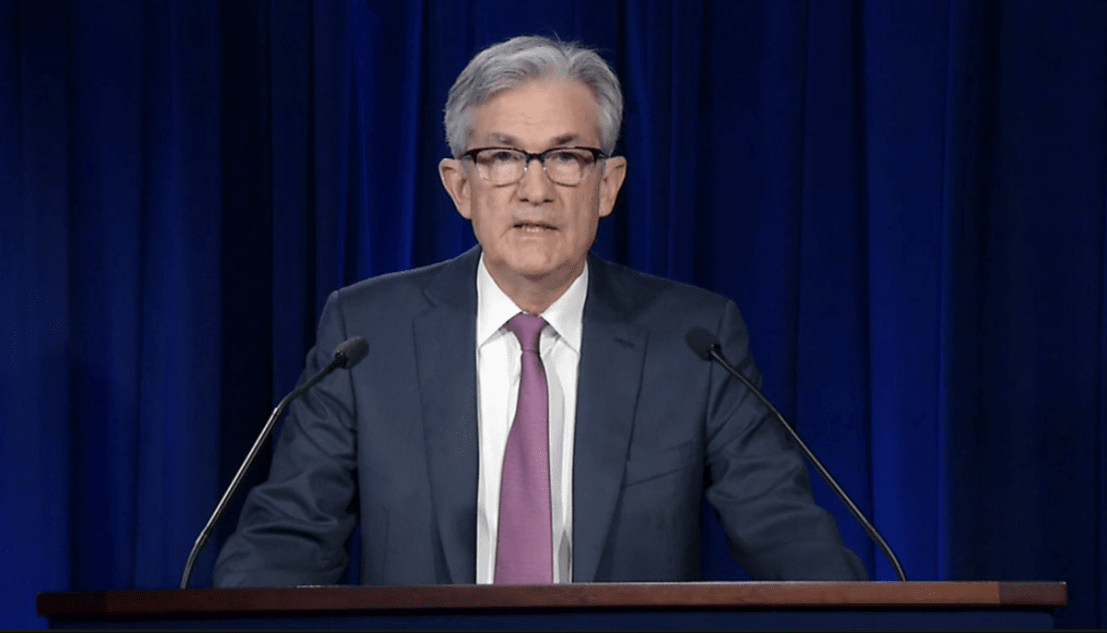Federal Reserve Chairman Jerome Powell laid the groundwork on Friday for upcoming interest rate cuts, though he declined to provide exact guidance on timing or magnitude. Powell declared that the time for the U.S. central bank to reduce interest rates has arrived.
In his anticipated keynote speech at the Federal Reserve’s annual retreat in Jackson Hole, Wyoming, Powell emphasized that “the time has come” for the U.S. central bank to cut interest rates, as growing risks to the labor market leave no room for further weakness, and inflation is near the Fed’s 2% target. This offers explicit support for an imminent easing of monetary policy. Powell said, “Upside side risks to inflation have diminished and the downside risks to employment have increased.” He further noted, ” The time has come for policy to adjust.The direction of travel is clear and the timing and pace of rate cuts will depend on incoming data, the evolving outlook and the balance of risks.”
Referring to the two goals that Congress has tasked the Fed with achieving, Powell expressed increased confidence that inflation is on a sustainable path back to 2%, after having risen to around 7% during the COVID-19 pandemic, while unemployment is increasing. He mentioned that the nearly one-percentage-point jump in the unemployment rate over the past year was largely due to increased labor supply and slower hiring, not rising layoffs, but emphasized that the Fed wanted to avoid further erosion. Powell’s previous statement about “pain” in the labor market as necessary to control inflation is now a thing of the past.
Powell highlighted the progress on inflation, stating, “inflation has declined significantly the labor market is no longer overheated and conditions are now less tight than those that prevailed before the pandemic.” He added, “Supply constraints have normalized and the balance of risks to our two mandates has changed.” He promised that the Fed would “do everything we can” to ensure that the labor market remains strong and that progress on inflation continues.
The current unemployment rate of 4.3% is roughly at the level that Fed officials consider consistent with stable long-term inflation. Powell stated, “We do not seek or welcome further cooling in the labor market. Conditions overall continue—the economy continues to grow at a solid pace, but the inflation and labor market data show an evolving situation. The upside risks to inflation have diminished, and the downside risks to employment have increased. As we highlighted in our last FOMC statement, we are attentive to the risks to both sides of our dual mandate. The time has come for policy to adjust. The direction of travel is clear, and the timing and pace of rate cuts will depend on incoming data, the evolving outlook, and the balance of risks. We will do everything we can to support a strong labor market as we make further progress toward price stability. With an appropriate dialing back of policy restraint, there is good reason to think that the economy will get back to 2% inflation while maintaining a strong labor market.”
As markets await direction on where monetary policy is headed, Powell focused both on looking back at what caused the inflation that led to an aggressive series of 13 rate hikes from March 2022 to July 2023 and on what lies ahead. He mentioned that the inflation rate is steadily returning to the Fed’s 2% target, though it has not yet fully reached it. A Fed-preferred measure of inflation recently showed the rate at 2.5%, down from 3.2% a year ago and well below its peak of over 7% in June 2022.
At the same time, the unemployment rate has been rising slowly but steadily, recently reaching 4.3%, a level that would otherwise trigger a long-established indicator of a recession. However, Powell attributed the rise in unemployment to more people entering the workforce and a slower pace of hiring, rather than an increase in layoffs or a general deterioration in the labor market. Powell emphasized, “Our unconditional commitment to fully restoring price stability and to keeping at it until the job is done. The FOMC did not flinch from carrying out our responsibilities, and our actions forcefully demonstrated our commitment.”
Similar Posts
Markets expect the Fed to start cutting rates in September, though Powell did not mention when he believes the easing of policy will begin. The minutes of the July Federal Open Market Committee (FOMC) meeting, released Wednesday, indicated that a large majority of officials believe a cut in September will be appropriate as long as there are no surprises in the data.
In addition to assessing the current situation, Powell spent considerable time in his speech evaluating what led to the rise in inflation (which reached its highest level in over 40 years), as well as the Fed’s policy response and why price pressures have eased without a recession. When inflation began to rise in early 2021, he and his colleagues (as well as many Wall Street economists) dismissed it as “transitory” and caused by Covid-related factors that would fade. Powell joked about this in his speech, saying, “The Good Ship Transitory was a crowded one, with most mainstream analysts and advanced economy central bankers on board. I think I see some former shipmates out there today.”
As it became clear that inflation was spreading from goods to services, the Fed changed course and began raising rates, eventually adding 5.25 percentage points to its benchmark overnight rate, which had been near zero after emergency cuts in the early days of the pandemic. Powell said that the rise in inflation was “a global phenomenon,” the result of “Rapid increases in the demand for goods, strained supply chains, tight labor markets, and sharp hikes in commodity prices.”
Powell attributed the confidence in the Fed and the well-anchored expectations that inflation would eventually ease to the economy avoiding a steep downturn during the rate hike cycle. He stated, “The FOMC did not flinch from carrying out our responsibilities, and our actions forcefully demonstrated our commitment to restoring price stability.” Powell added that there is still a lot to learn from the experience, concluding with, “We will be open to criticism and new ideas while preserving the strengths of our framework. The limits of our knowledge, so clearly evident during the pandemic, demand humility and a questioning spirit focused on learning lessons from the past and applying them flexibly to our current challenges.”



